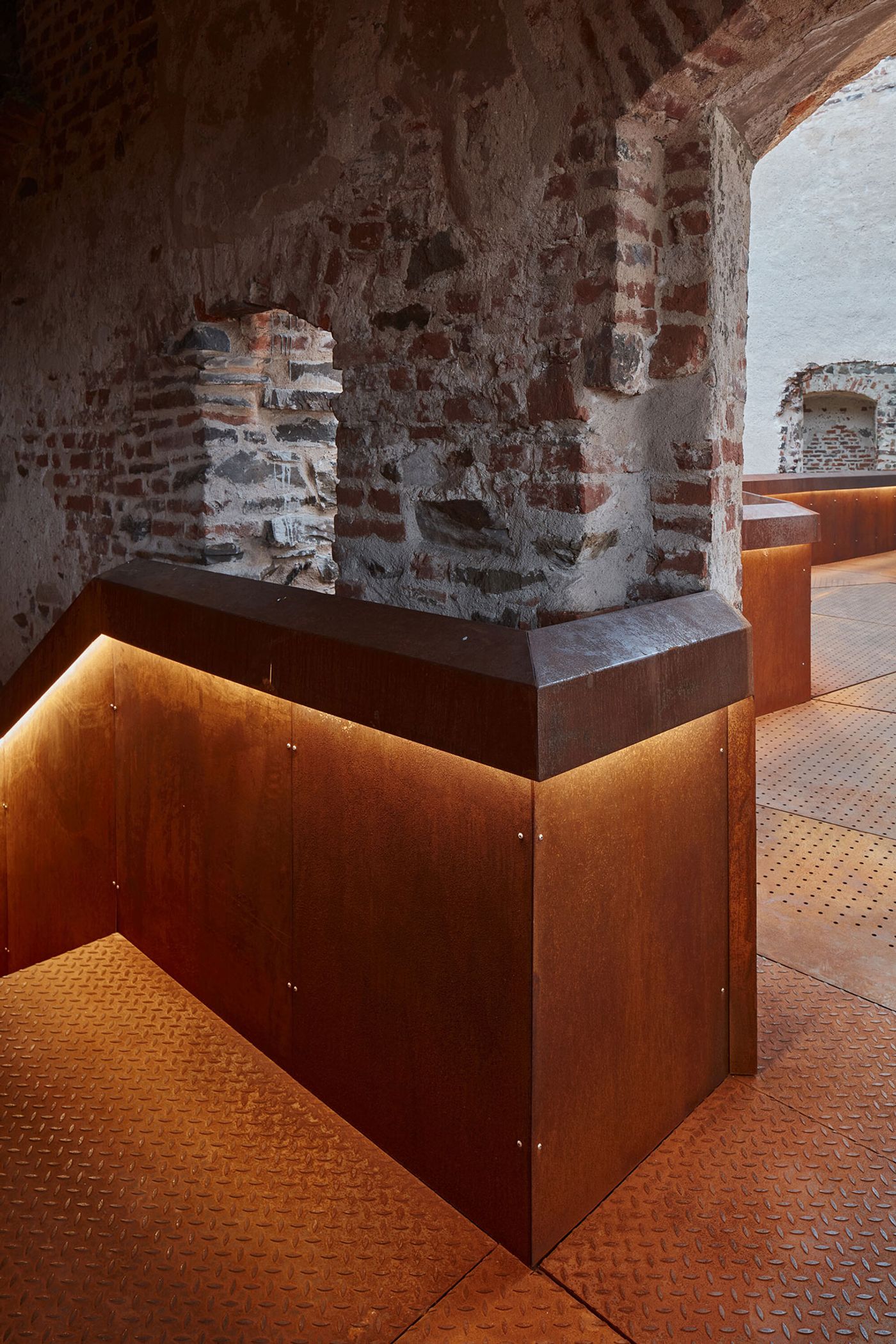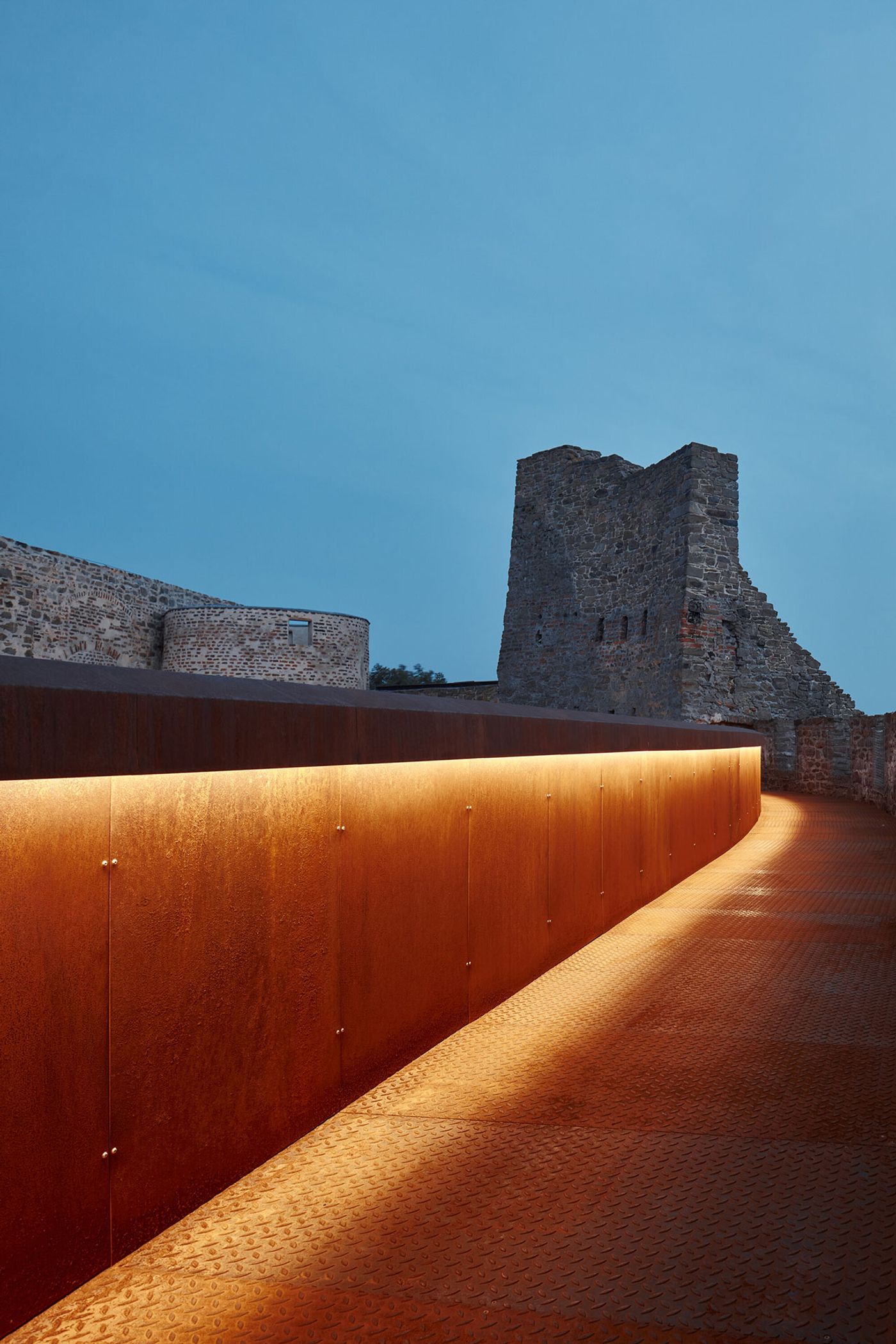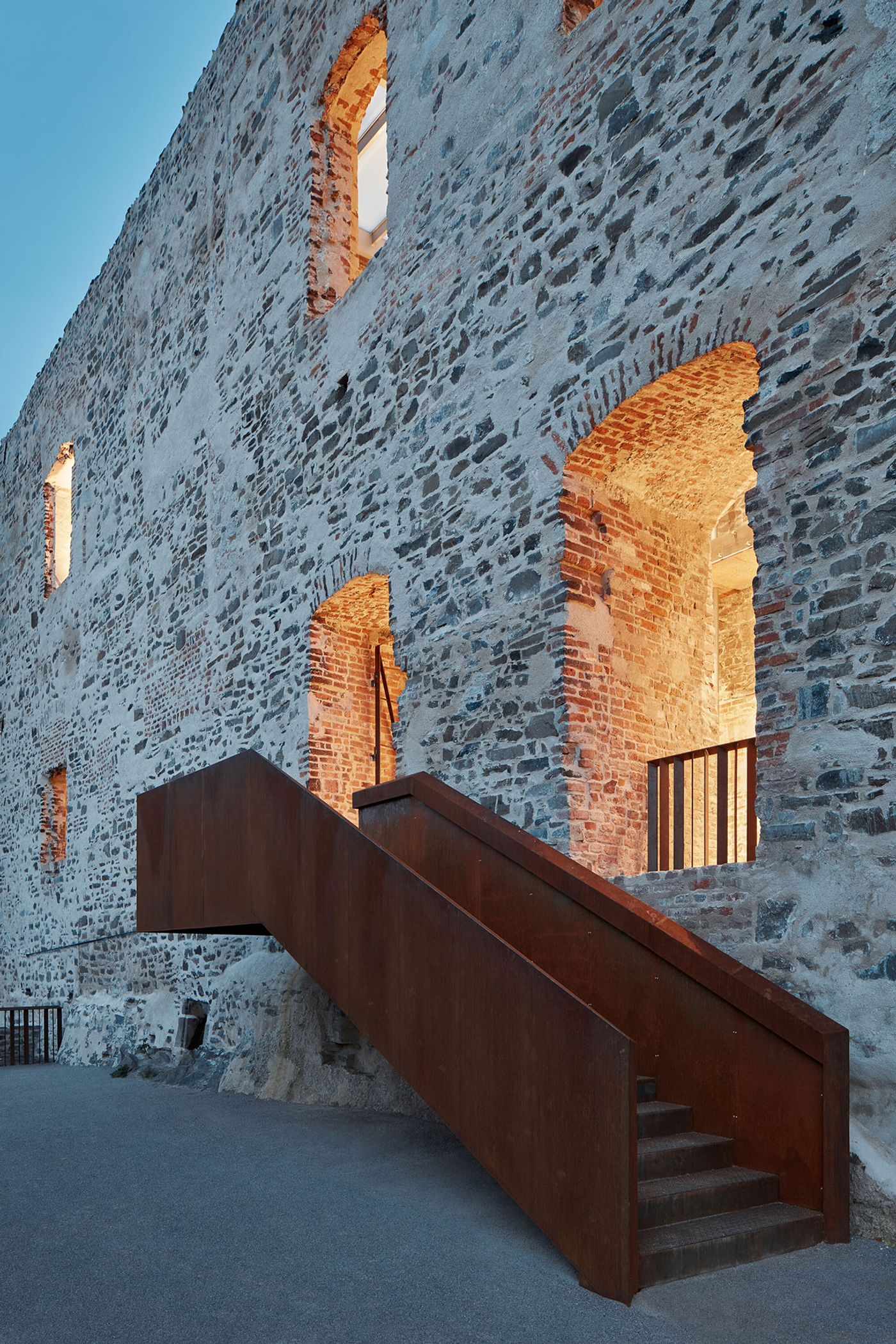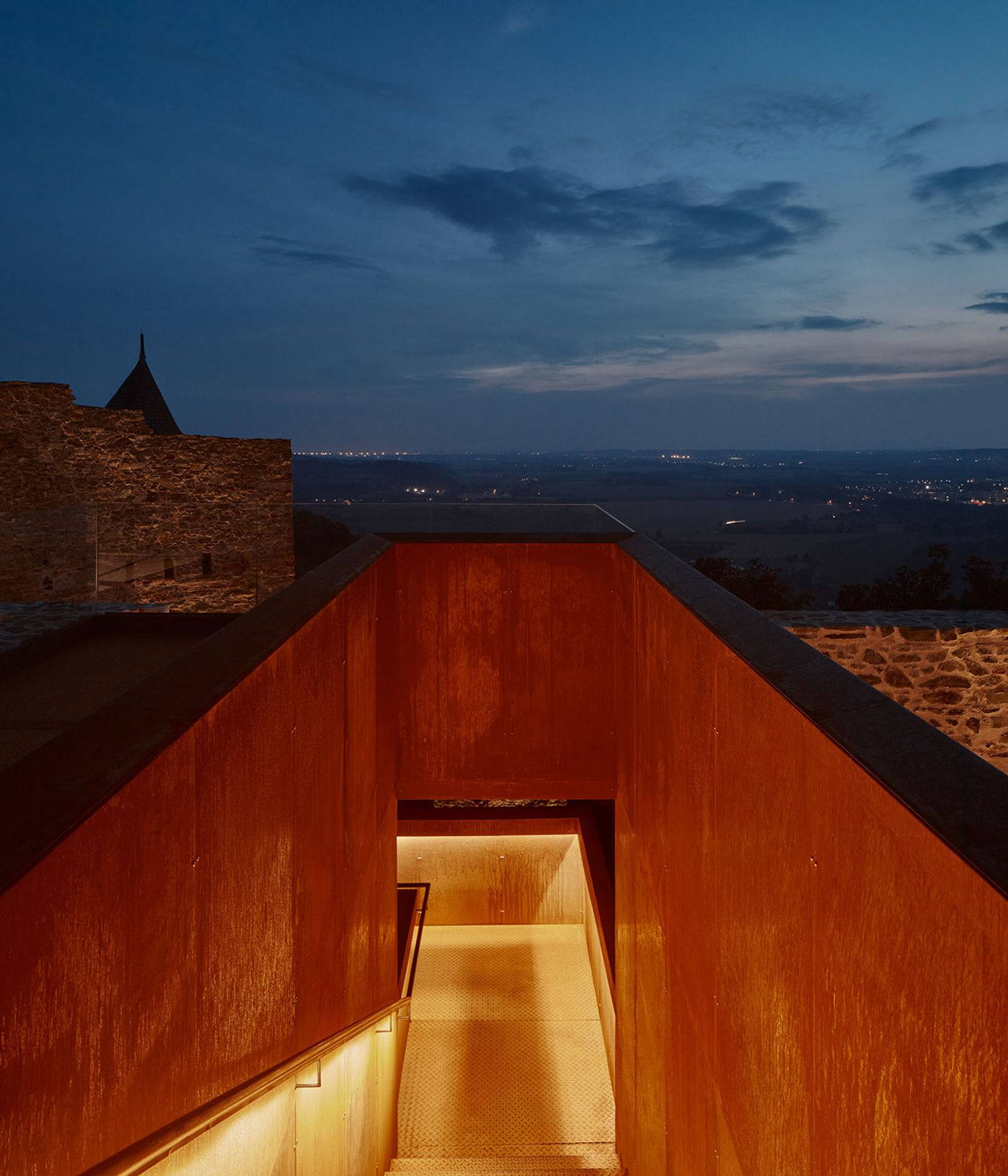
Atelier-r Evocatively Intersperses the Ruins of Helfštýn Castle with Concrere, Glass & Steel
Words by Yatzer
Location
Týn nad Bečvou, Czech Republic
Atelier-r Evocatively Intersperses the Ruins of Helfštýn Castle with Concrere, Glass & Steel
Words by Yatzer
Týn nad Bečvou, Czech Republic
Týn nad Bečvou, Czech Republic
Location
Heritage buildings pose a particular challenge to architects when it comes to refurbishment as there is always a trade-off between preserving the historic fabric and facilitating contemporary use, but at the same time, when thoughtfully designed and executed, such projects present a unique opportunity to interweave past and present in an evocative and instructive manner. This was the challenge Czech architecture studio Atelier-r came up against when commissioned a few years ago to refurbish the crumbling Helfštýn Castle in Moravia, a sprawling fortress perched high above the Moravian Gate valley, the largest medieval castle ruins in the Czech Republic. Atelier-r’s contemporary intervention is both delicate and assertive; rather than competing with the historical building, it stands apart through the use of modern materials like glass, steel and concrete, creating a cohesive unit in which all the elements, old and new, go hand in hand.

Photography by BoysPlayNice.
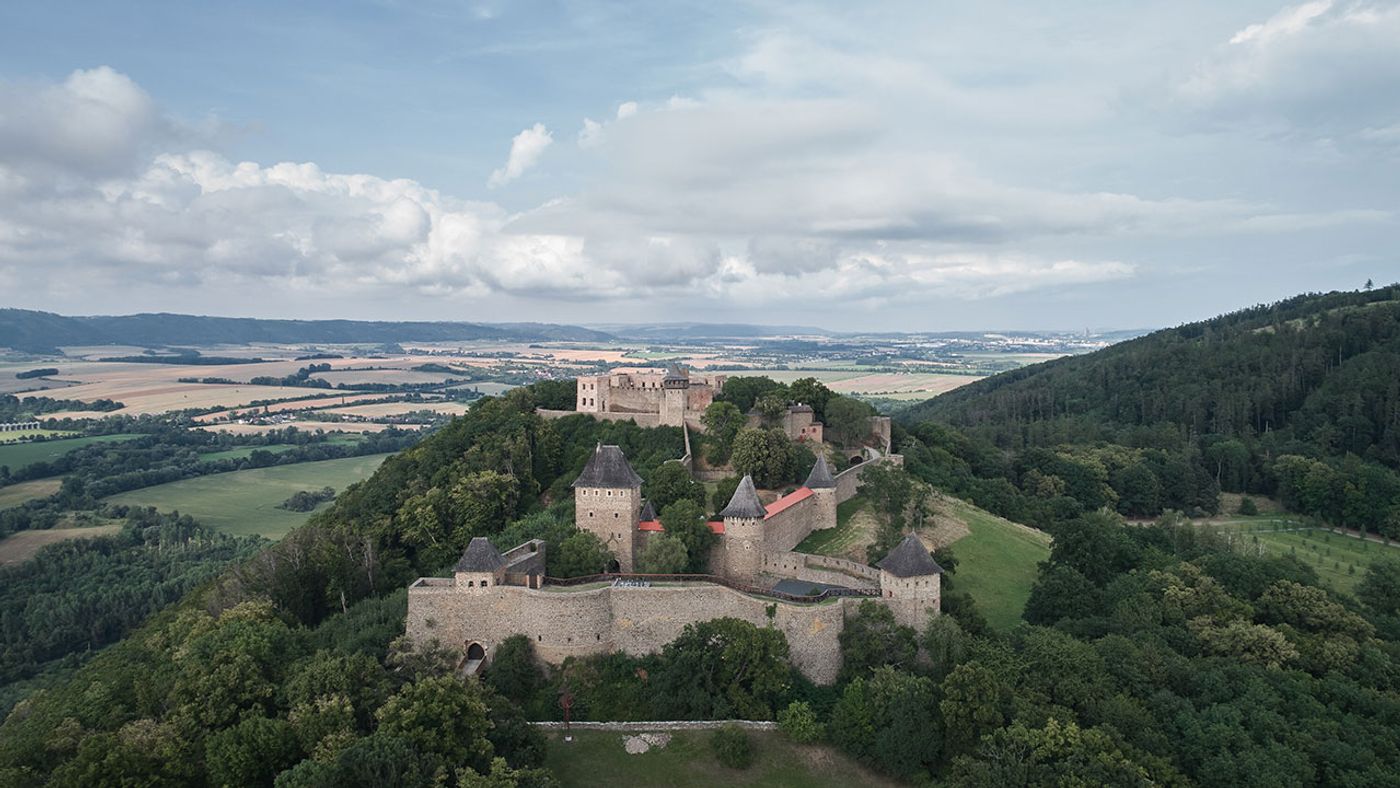
Photography by BoysPlayNice.
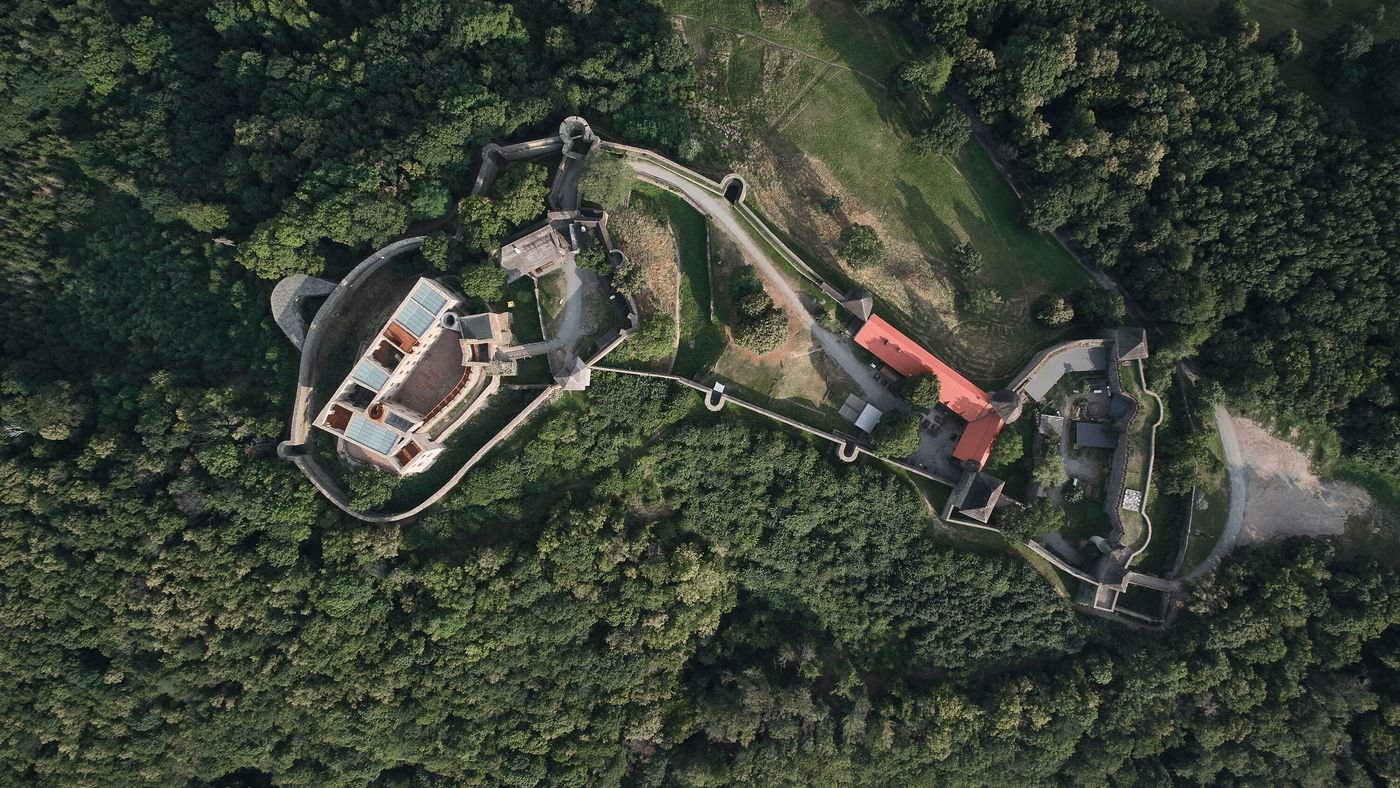
Photography by BoysPlayNice.
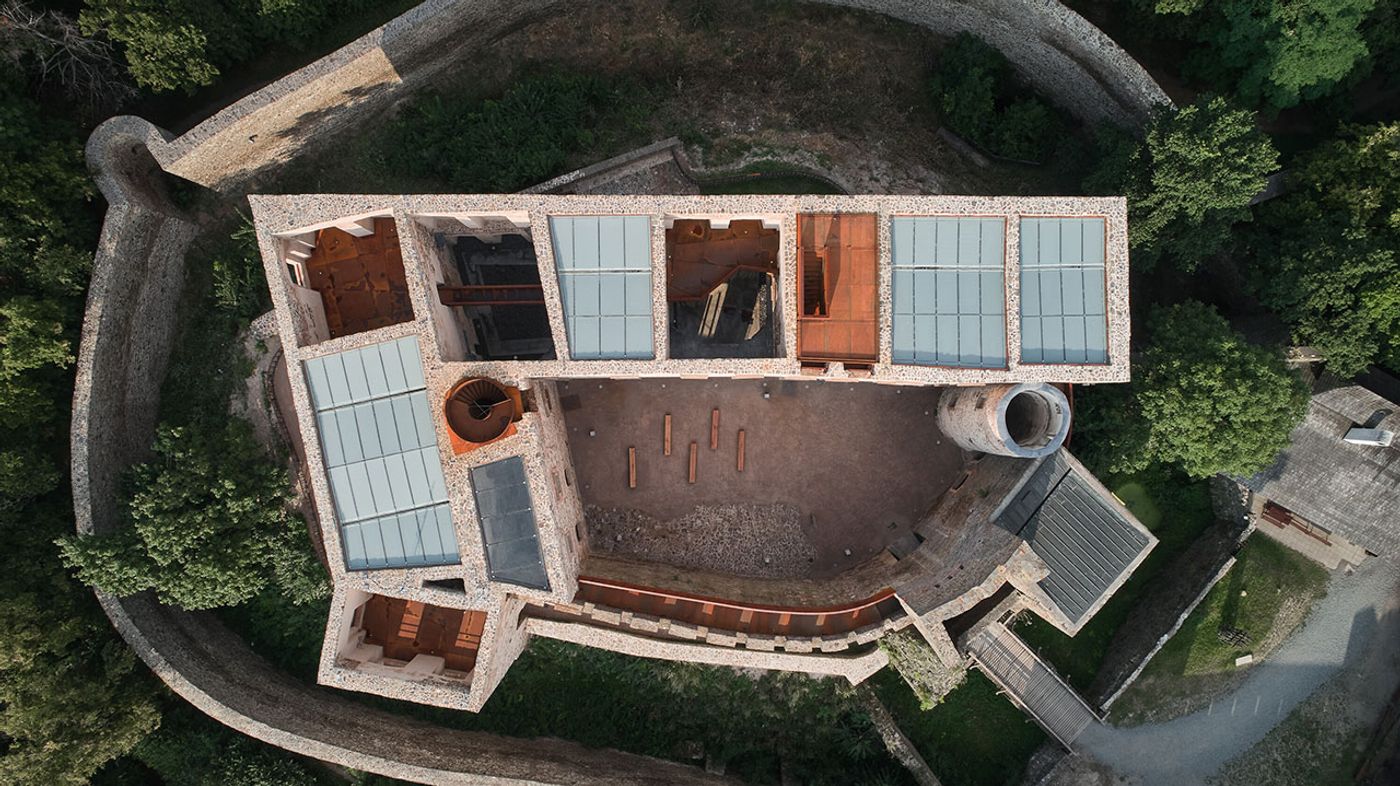
Photography by BoysPlayNice.
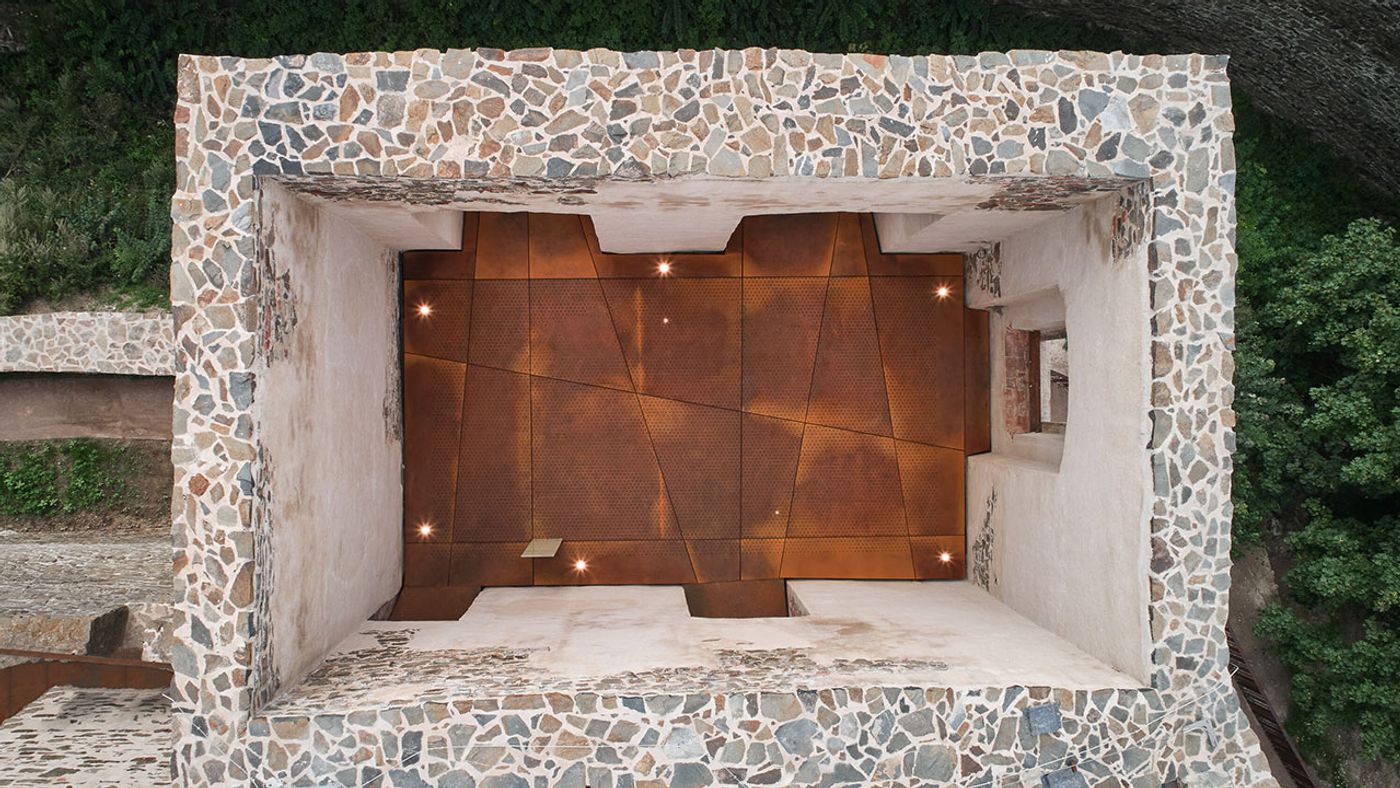
Photography by BoysPlayNice.

Photography by BoysPlayNice.
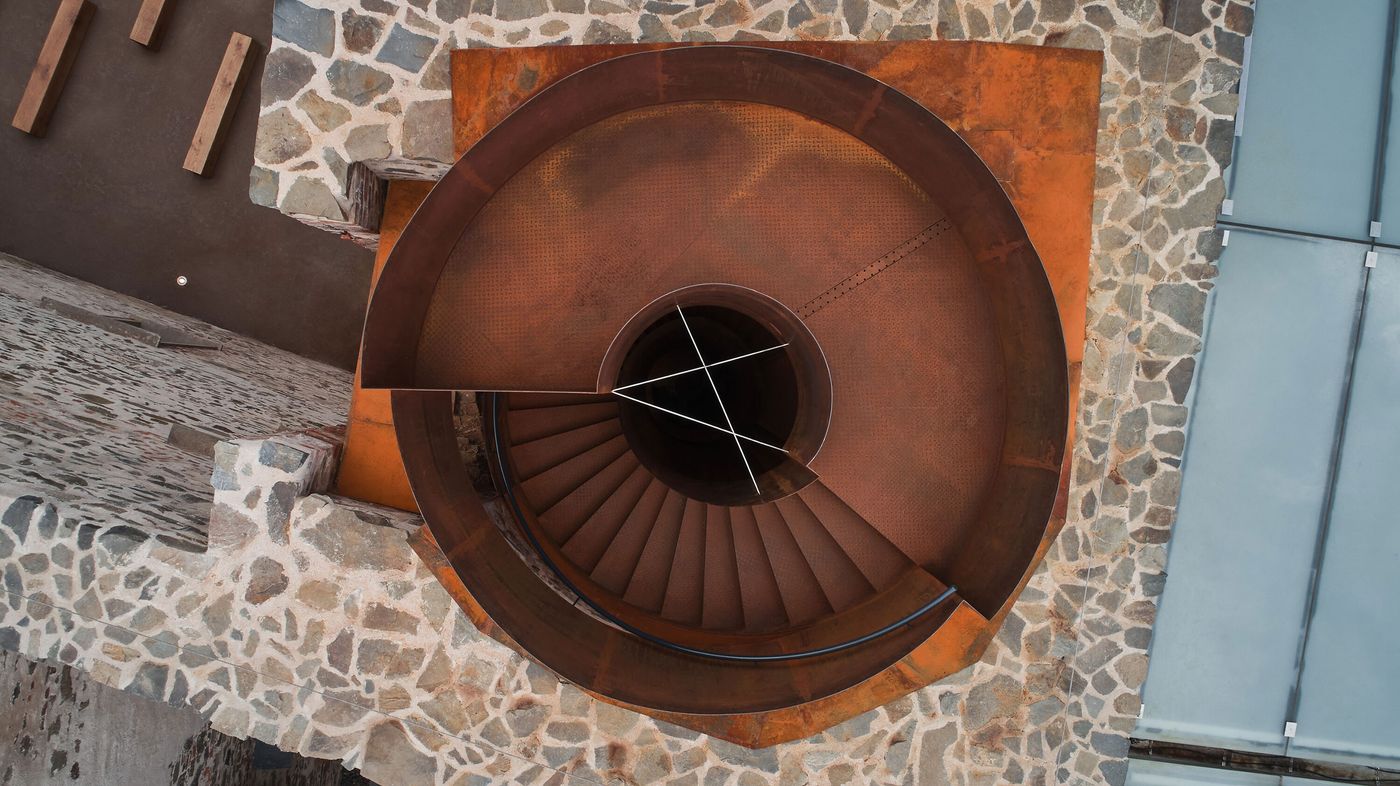
Photography by BoysPlayNice.
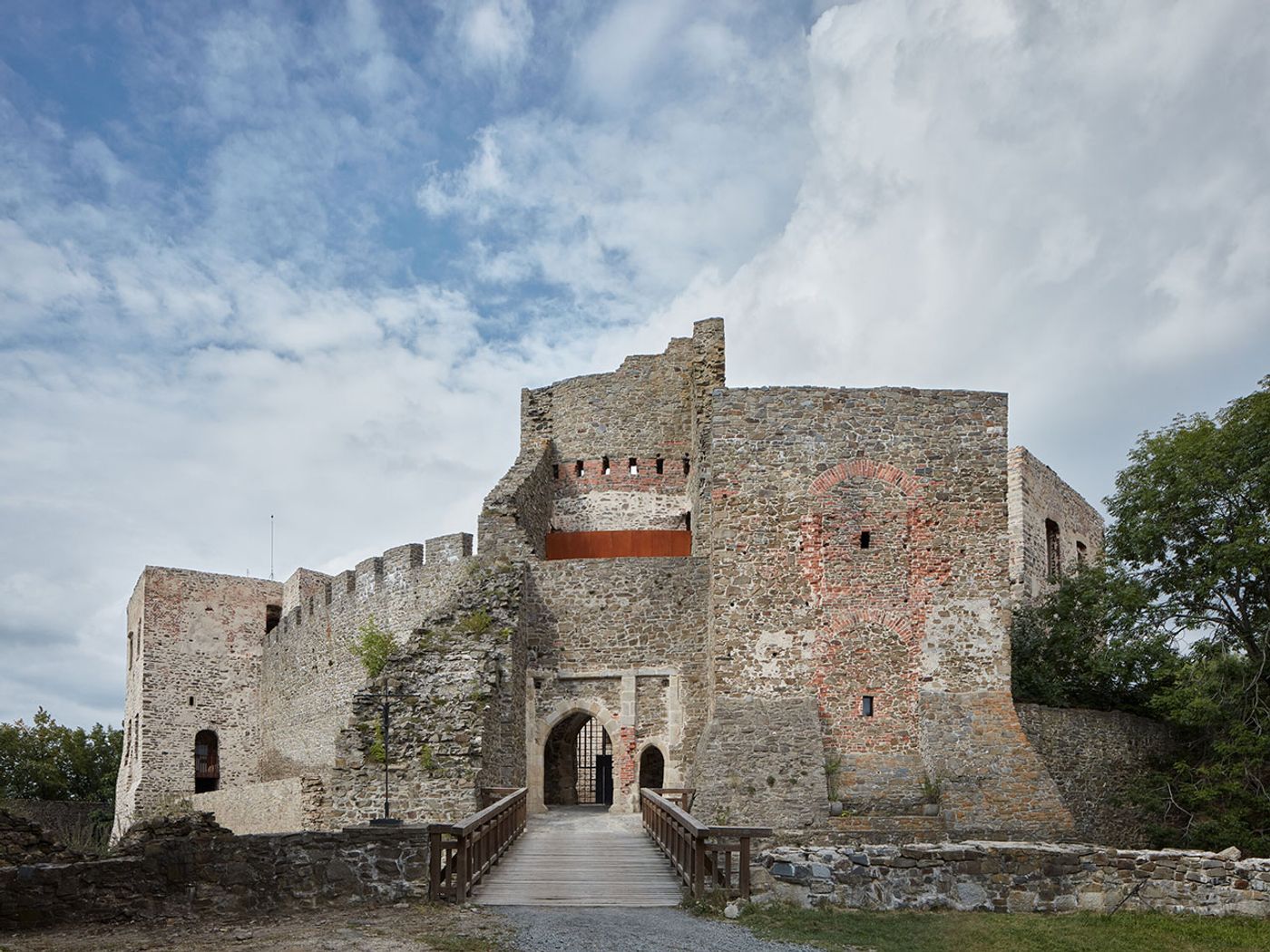
Photography by BoysPlayNice.
Founded in the 14th century, and extended during the following three centuries, including the addition of a Renaissance Palace, the hilltop castle was finally abandoned in the 18th century, and soon fell into disrepair, later gaining popularity as an archaeological site as well as a romantic spot. With its derelict state posing serious safety concerns, the castle’s restoration was as urgent as it was demanding – the process included creating a 3D model based on thousands of photographs from a drone, mapping all the types of plaster and masonry constructions, and designing a new roof. At the same time, the authorities’ insistence on preserving its ruinous condition gave Atelier-r an advantage which they wouldn’t have had if the castle was to be completely restored, as the gaps in the ruins allowed them to insert new sightseeing routes connecting the ground floor with the palace’s newly accessible higher levels.
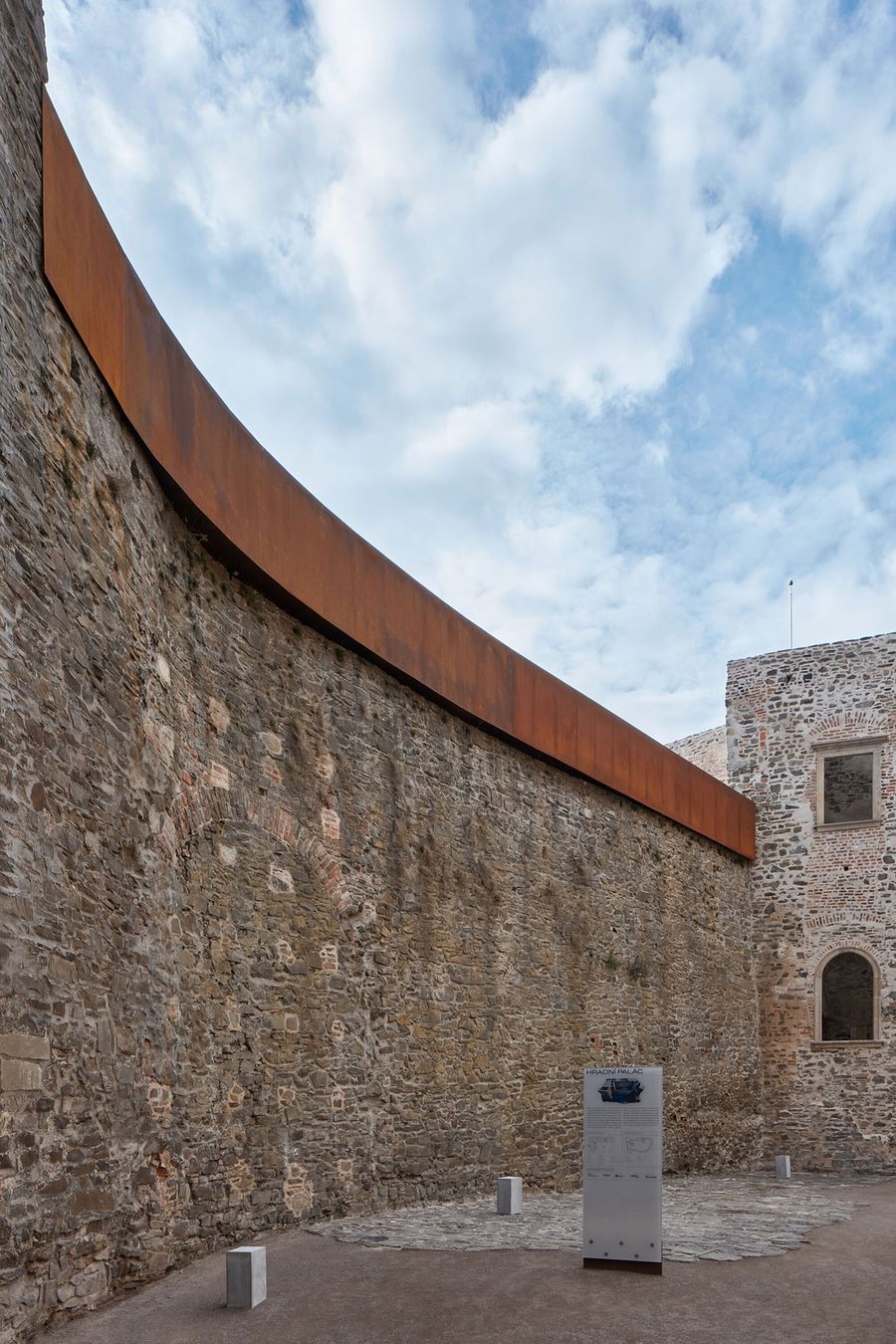
Photography by BoysPlayNice.
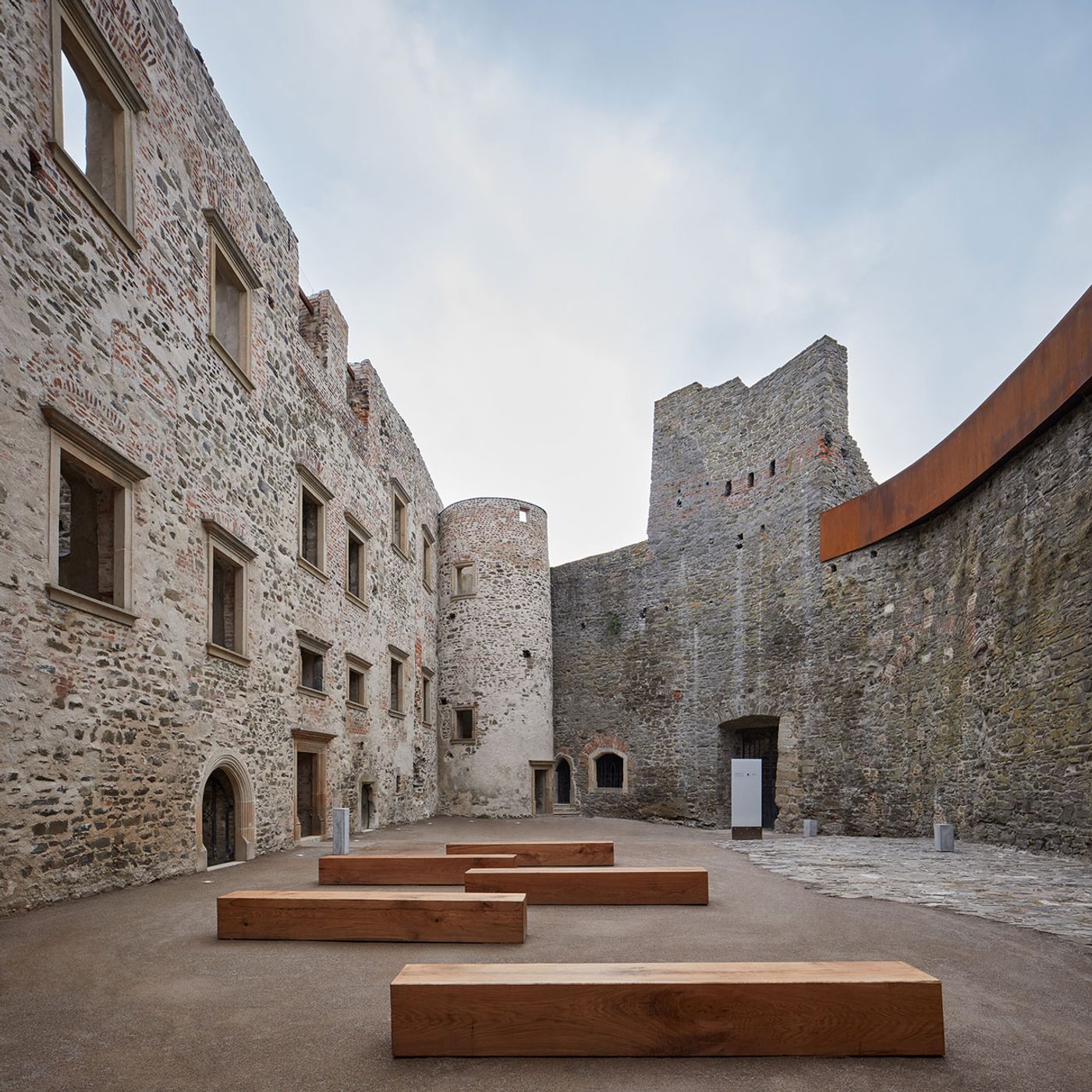
Photography by BoysPlayNice.
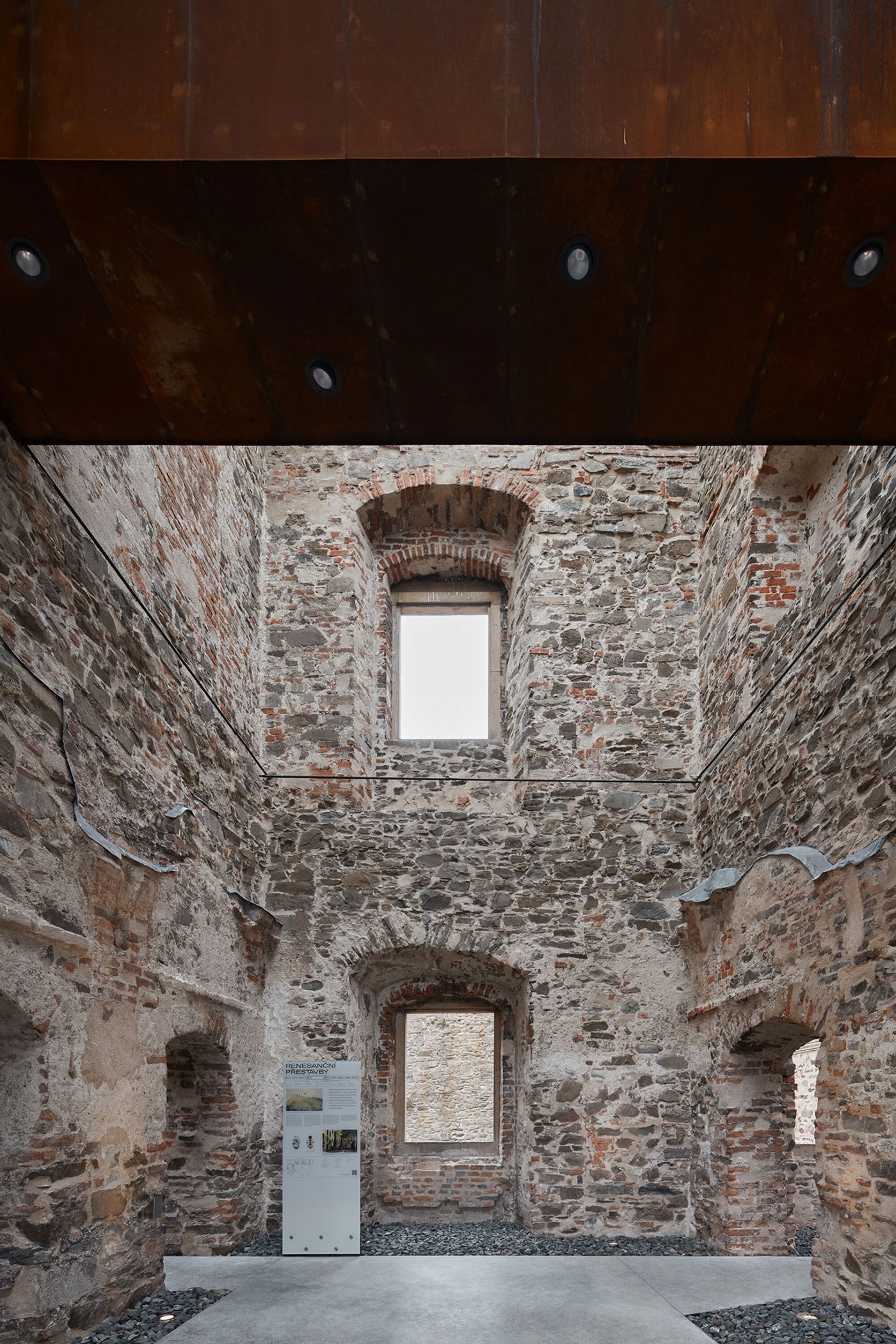
Photography by BoysPlayNice.

Photography by BoysPlayNice.
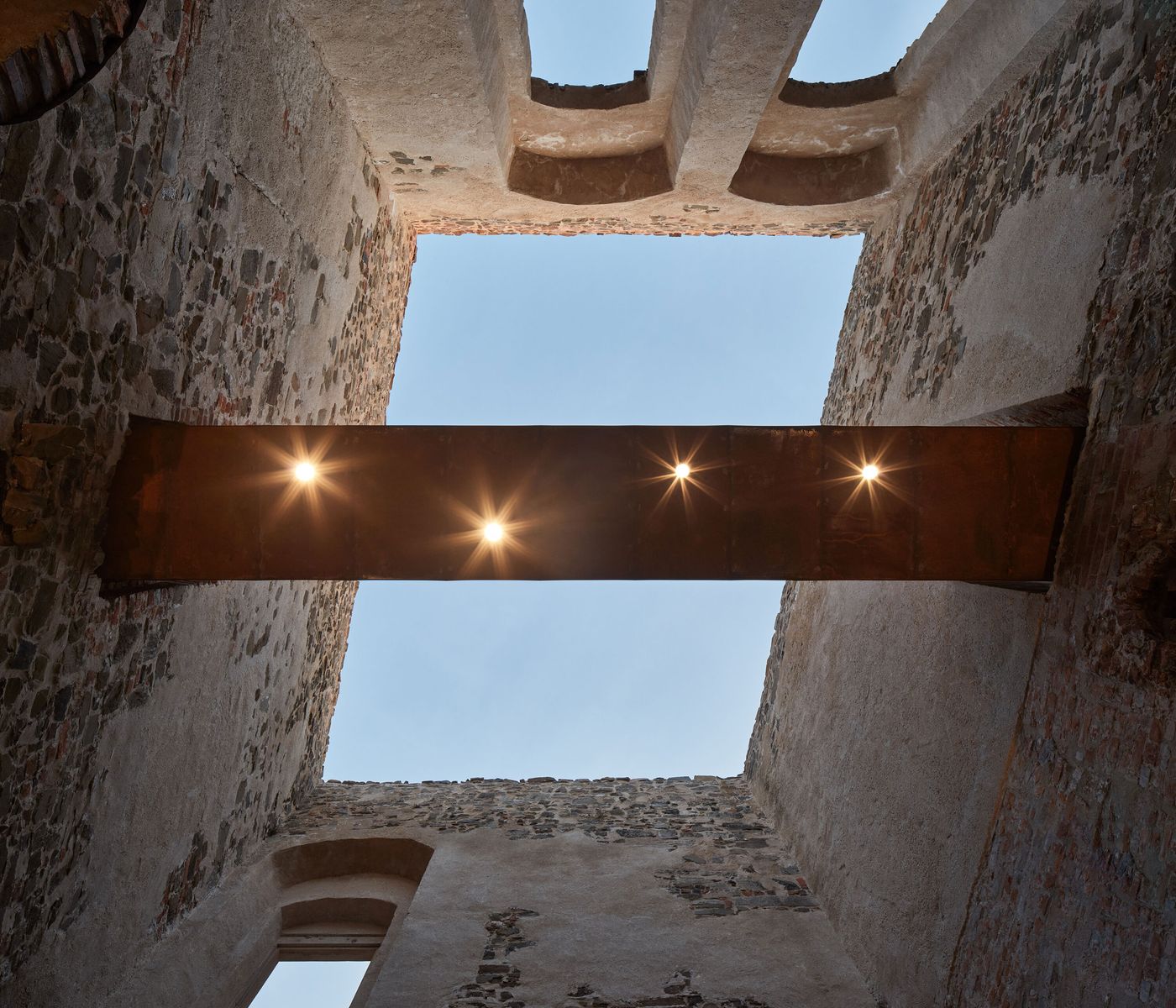
Photography by BoysPlayNice.
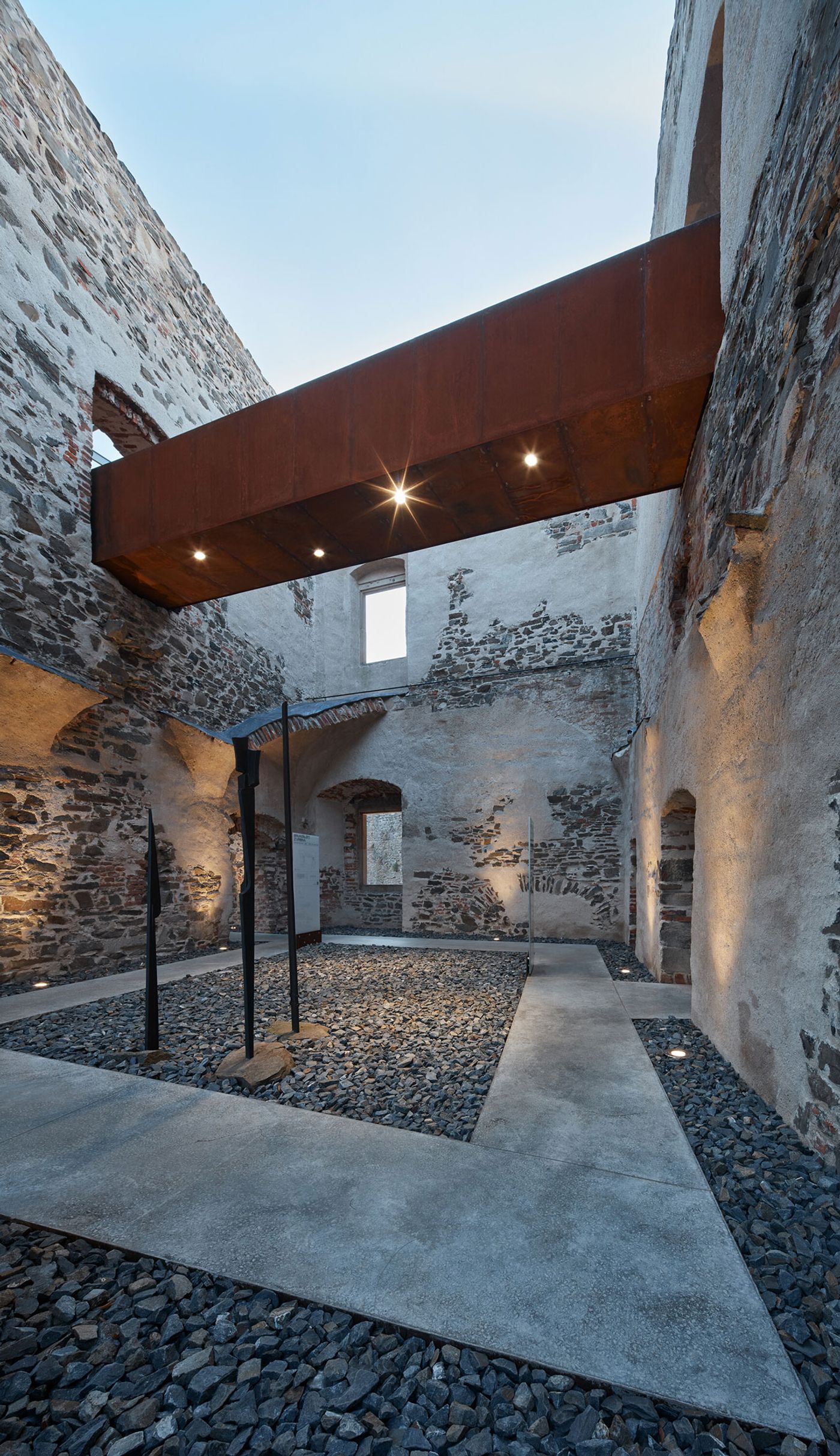
Photography by BoysPlayNice.
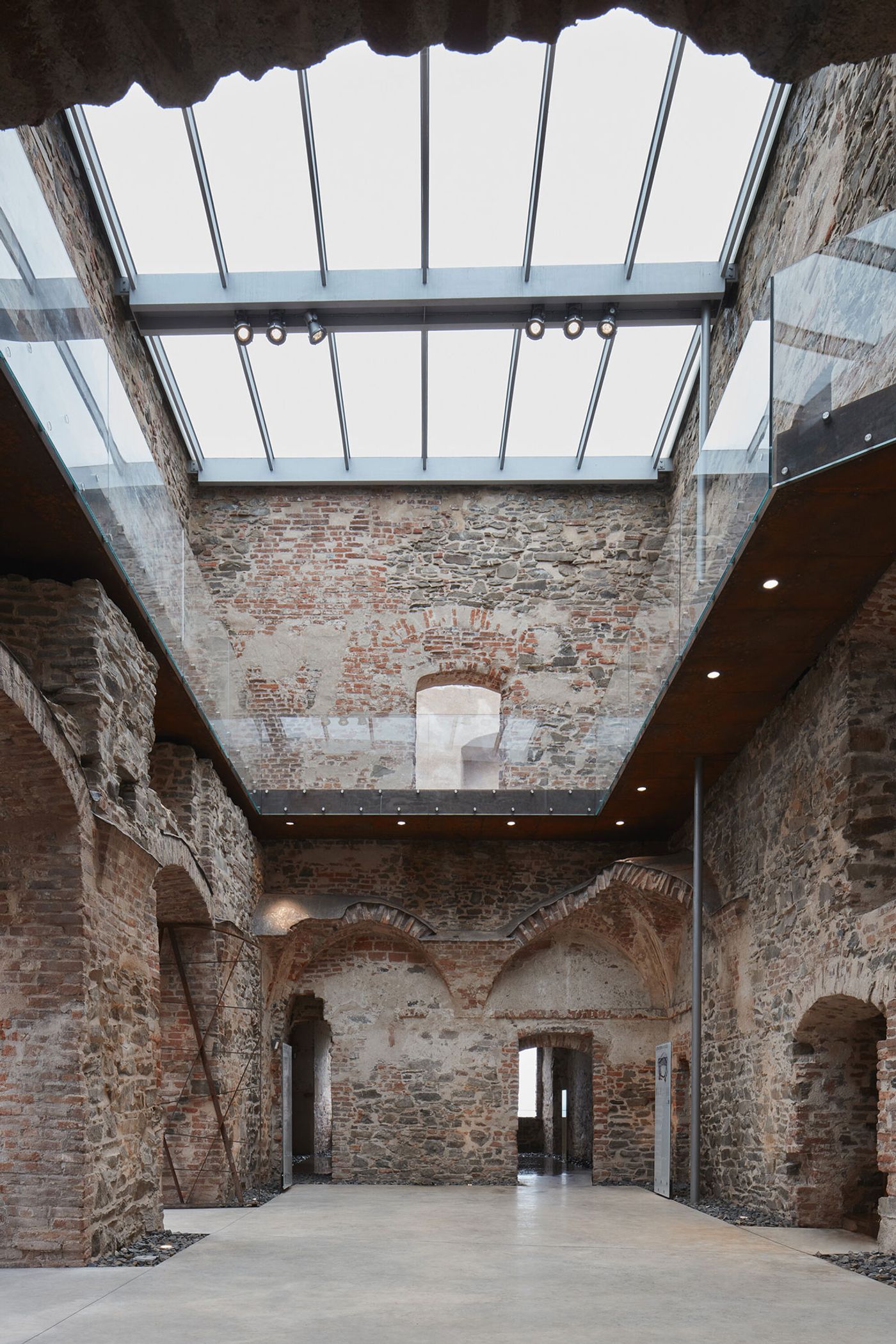
Photography by BoysPlayNice.
The architects have worked with three basic elements, one for each level of the building, in order to distinguish the modern interventions from the historic masonry structure: glass on steel beams for the roofing, Corten steel for staircases and footbridges, and finally, polished concrete for the ground floor paths.
The insertion of sandblasted glass roofs swathes the palace chambers with softly diffused daylight complimenting the exhibition displays and allowing visitors to perceive the historic interiors in more detail. In contrast, clear glass was used for the chapel roof as a symbol of the heavens looming above, while several spaces have been intentionally left with no roof in order to document the passage of time as well as to encourage visitors to look up at the sky.
Zigzagging along and through the masonry walls, the Corten steel footbridges and staircases create a distinct circulation network that gradually guides visitors from the ground floor exhibition spaces all the way up to the top of the structure where the former ramparts now serve as viewing terraces. As the route weaves its way around the ruins, visitors have the opportunity to observe construction details and architectural features from up close, as well as take in the complex from different perspectives. Once at the top, they can also enjoy panoramic views of the surrounding landscape.
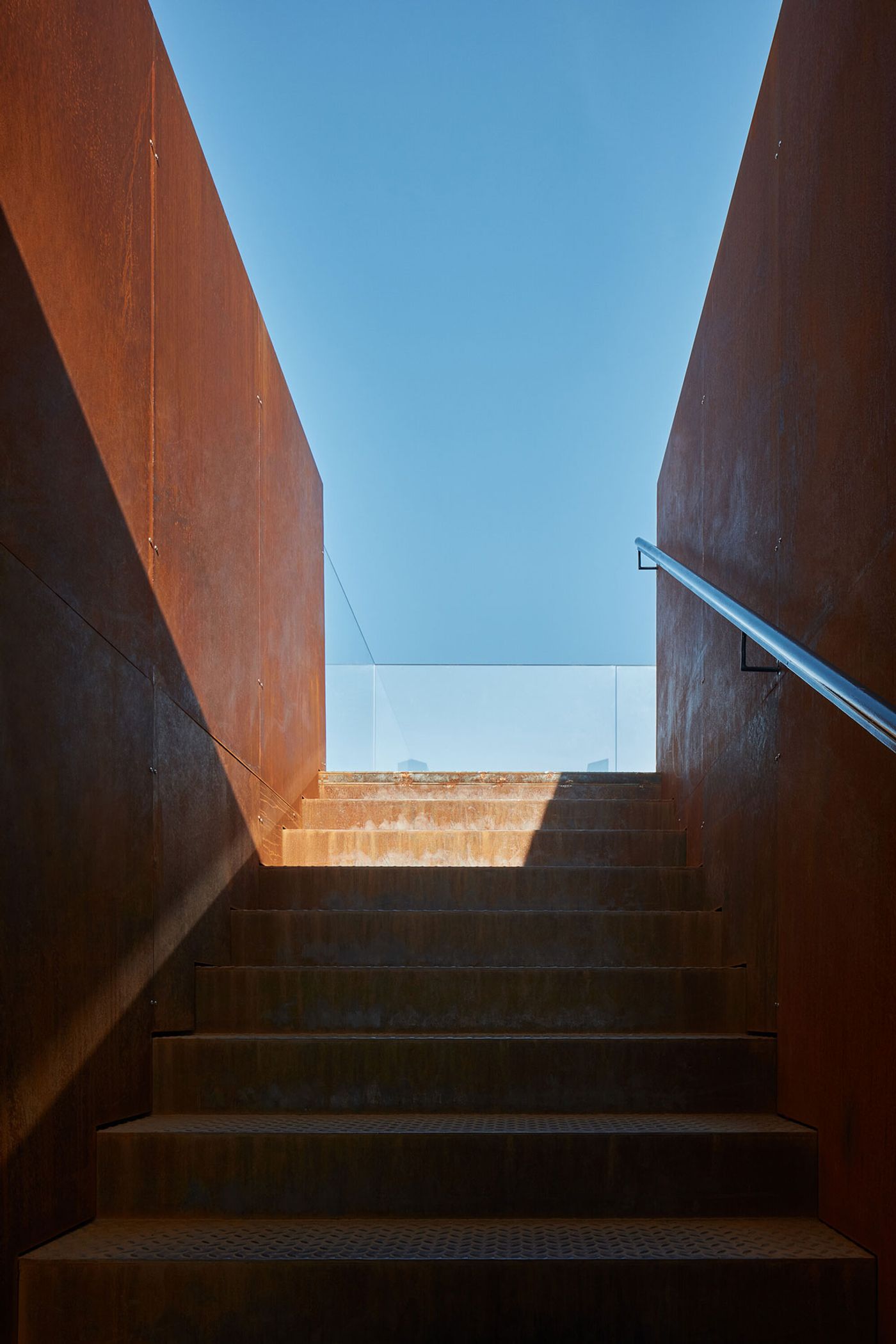
Photography by BoysPlayNice.
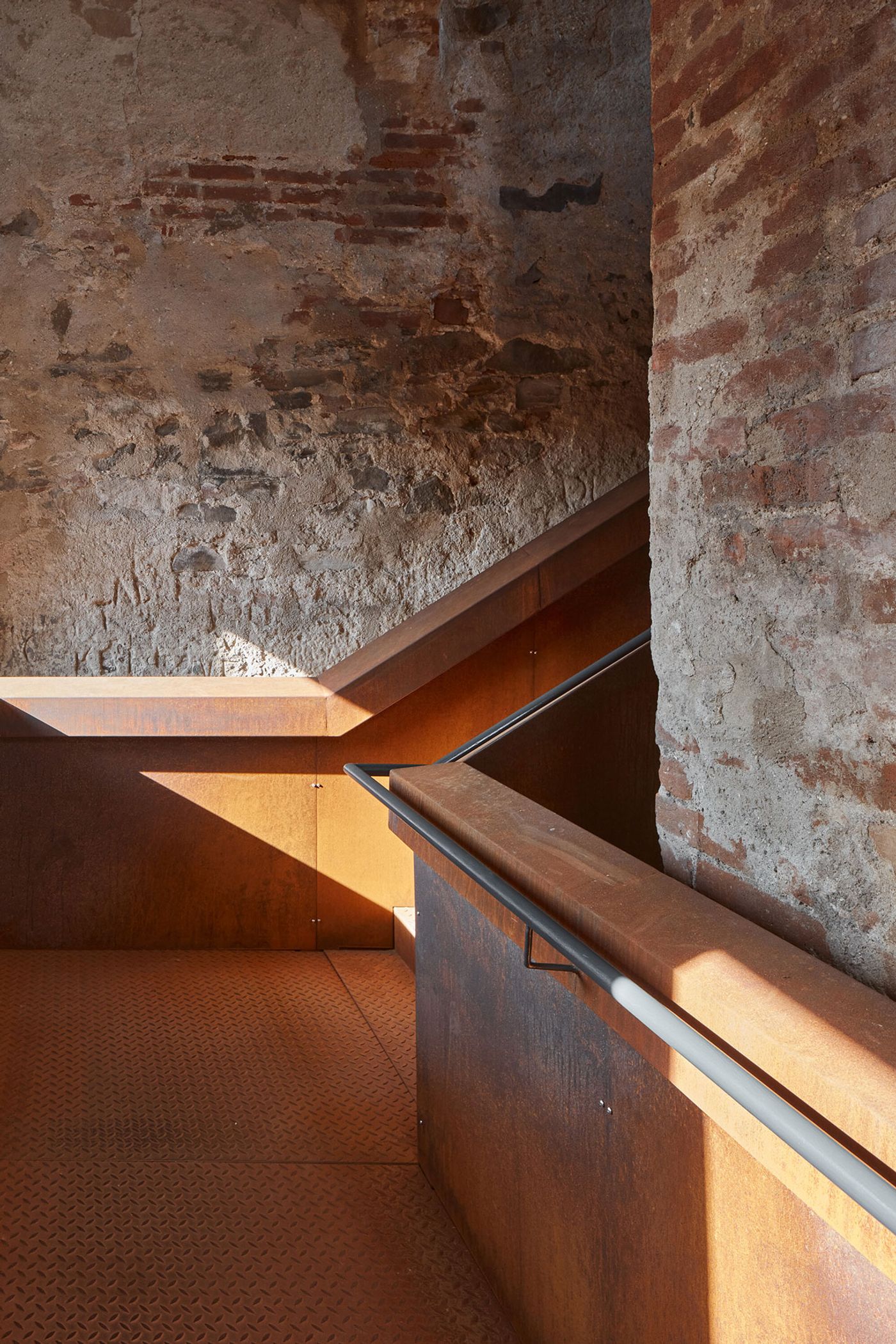
Photography by BoysPlayNice.
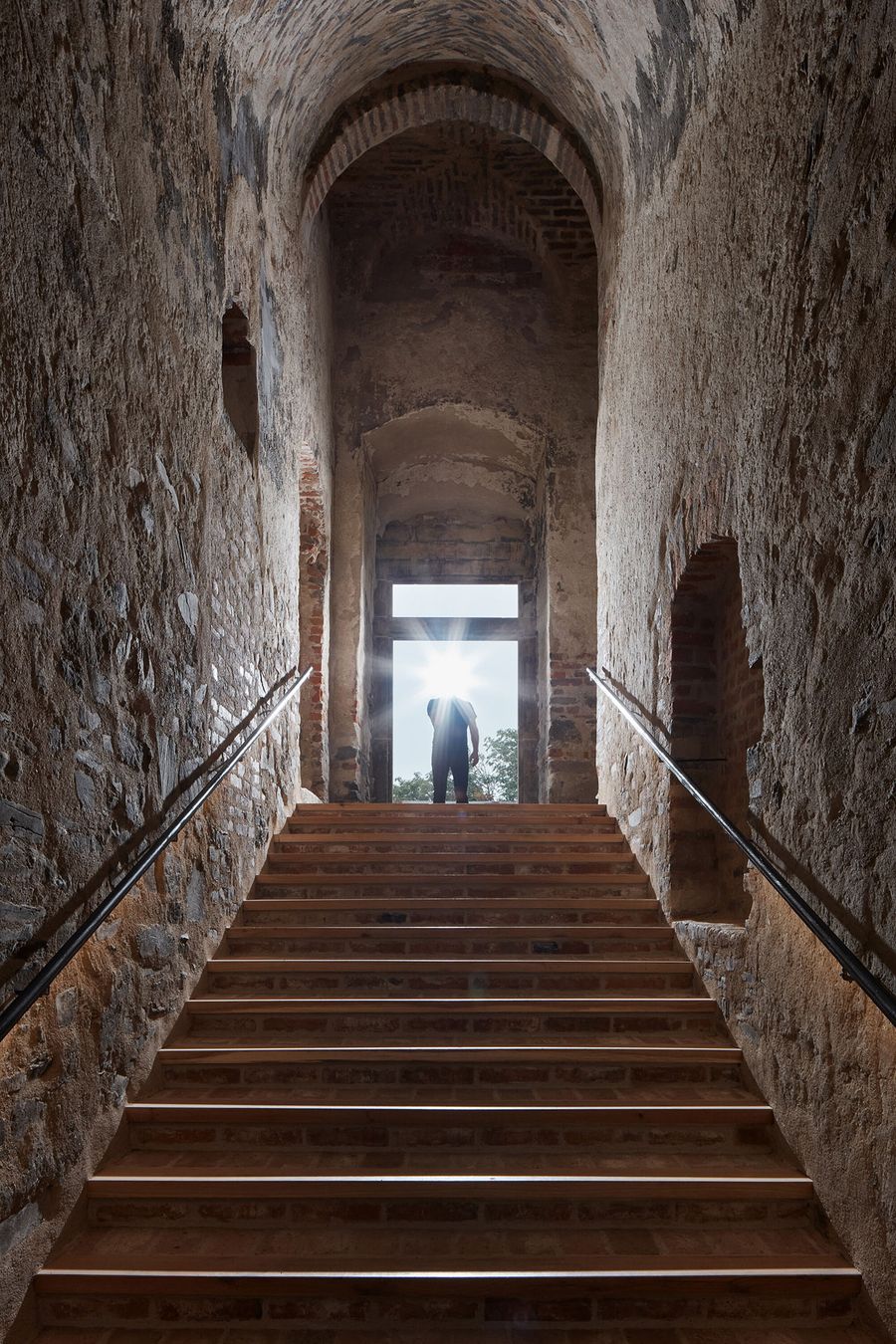
Photography by BoysPlayNice.
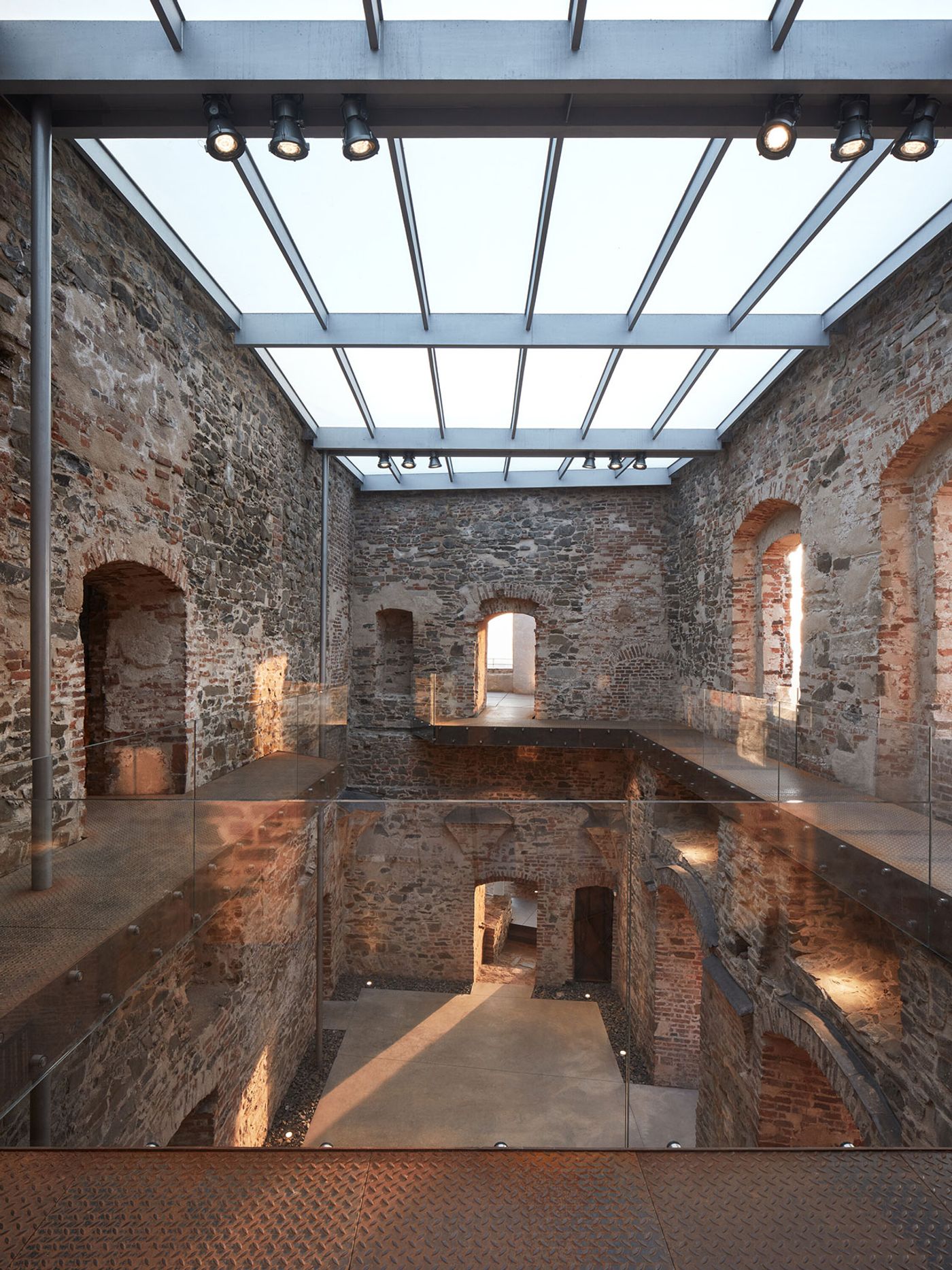
Photography by BoysPlayNice.
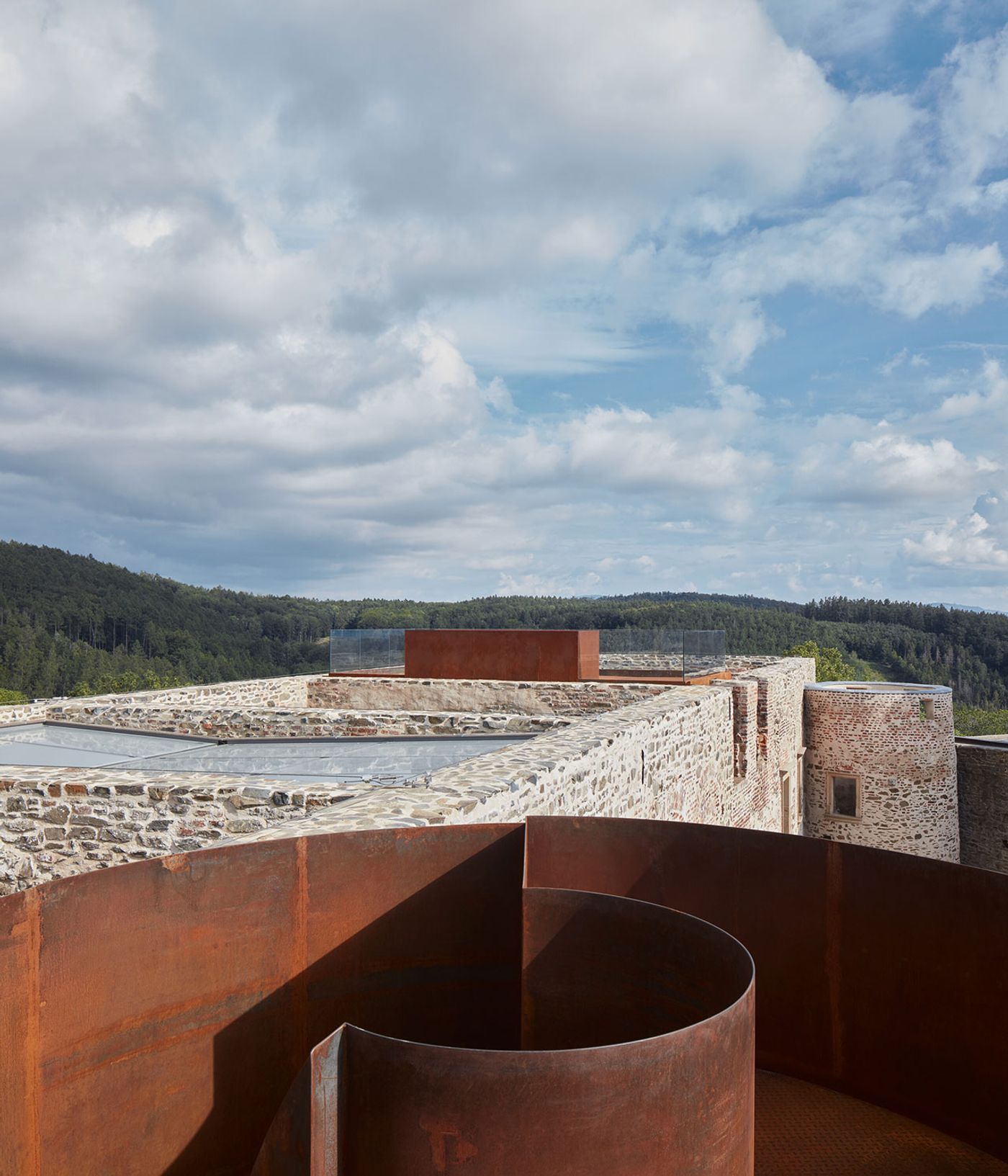
Photography by BoysPlayNice.
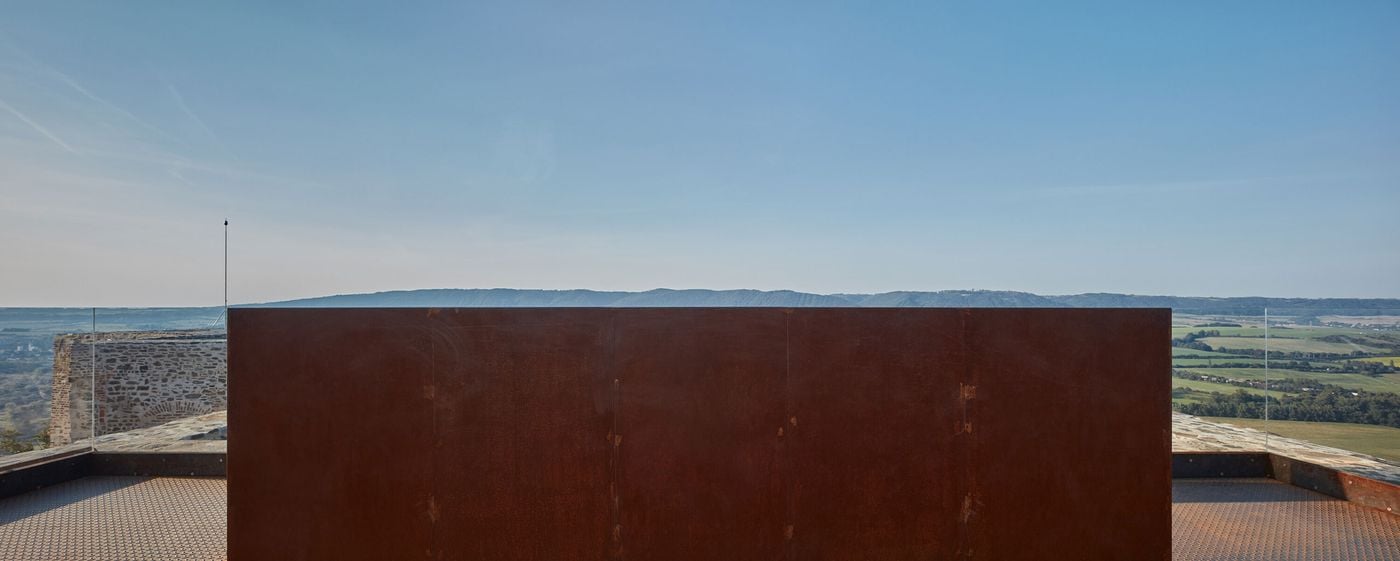
Photography by BoysPlayNice.

Photography by BoysPlayNice.
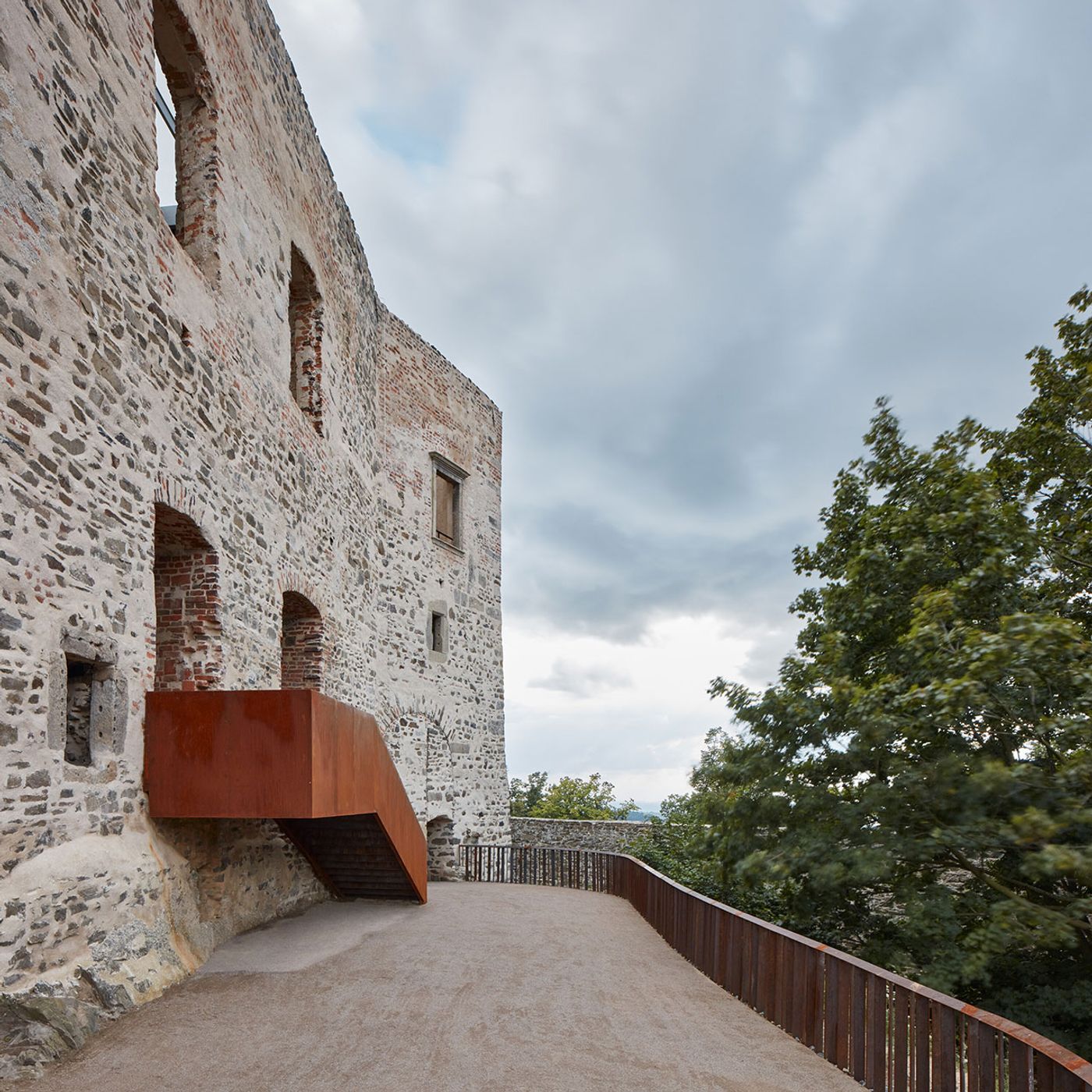
Photography by BoysPlayNice.

Photography by BoysPlayNice.
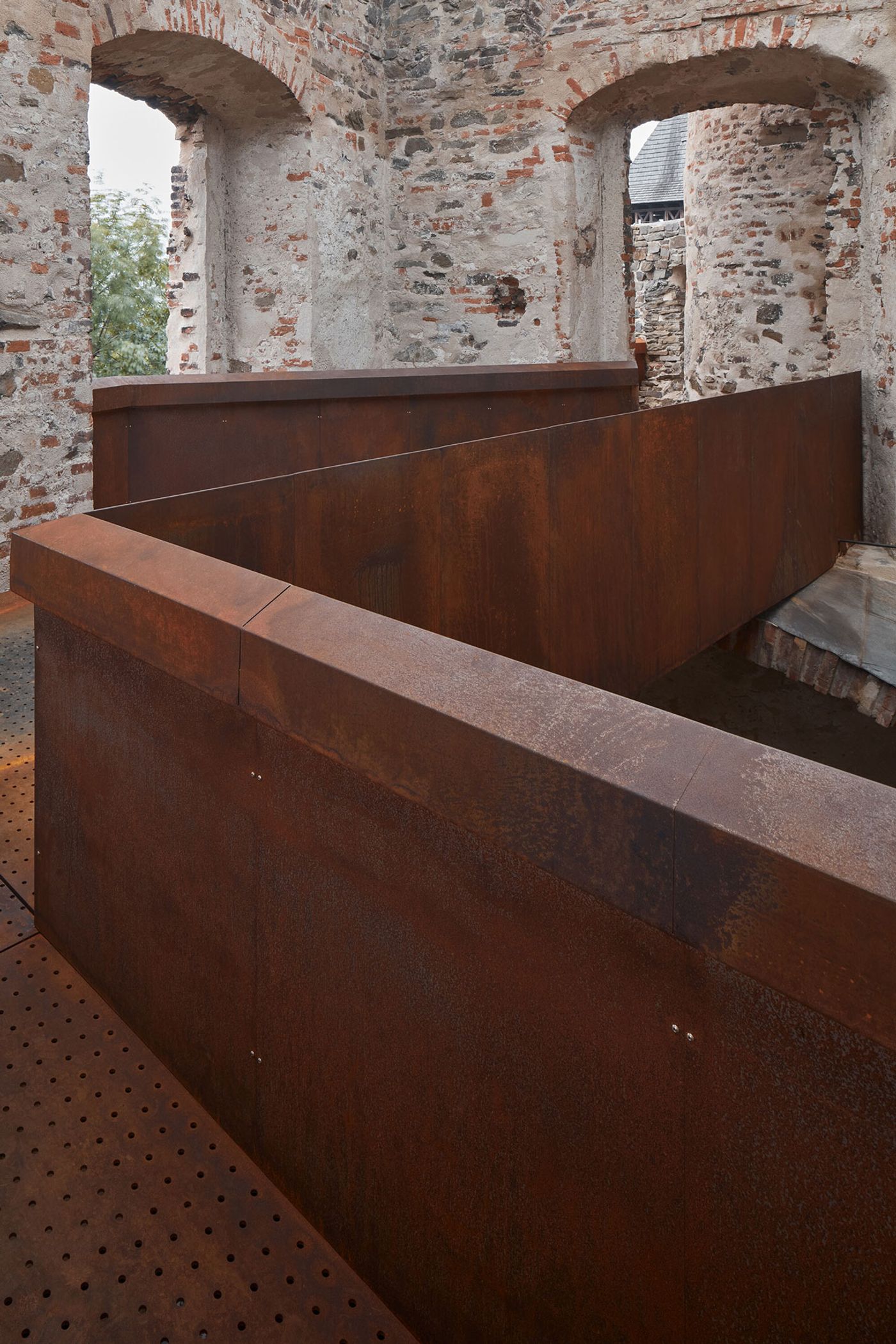
Photography by BoysPlayNice.

Photography by BoysPlayNice.
The choice of Corten steel, a copper chromium alloy steel with one of the highest levels of resistance to atmospheric weathering, was chosen or both for practical and aesthetic reasons – as the alloy corrodes it will slowly match the hue of the masonry walls. The material also references the Hefaiston blacksmith workshop, an annual gathering of blacksmiths at Helfštýn Castle that is considered one of the most important events of artist blacksmiths in the world. Corten steel profiles have also been used to delineate the concrete pavement on the ground floor, with the gaps between them and the masonry walls filled with gravel, which beautifully ties in the different textures, and further exemplifies Atelier-r’s masterful interlacing of old and new.
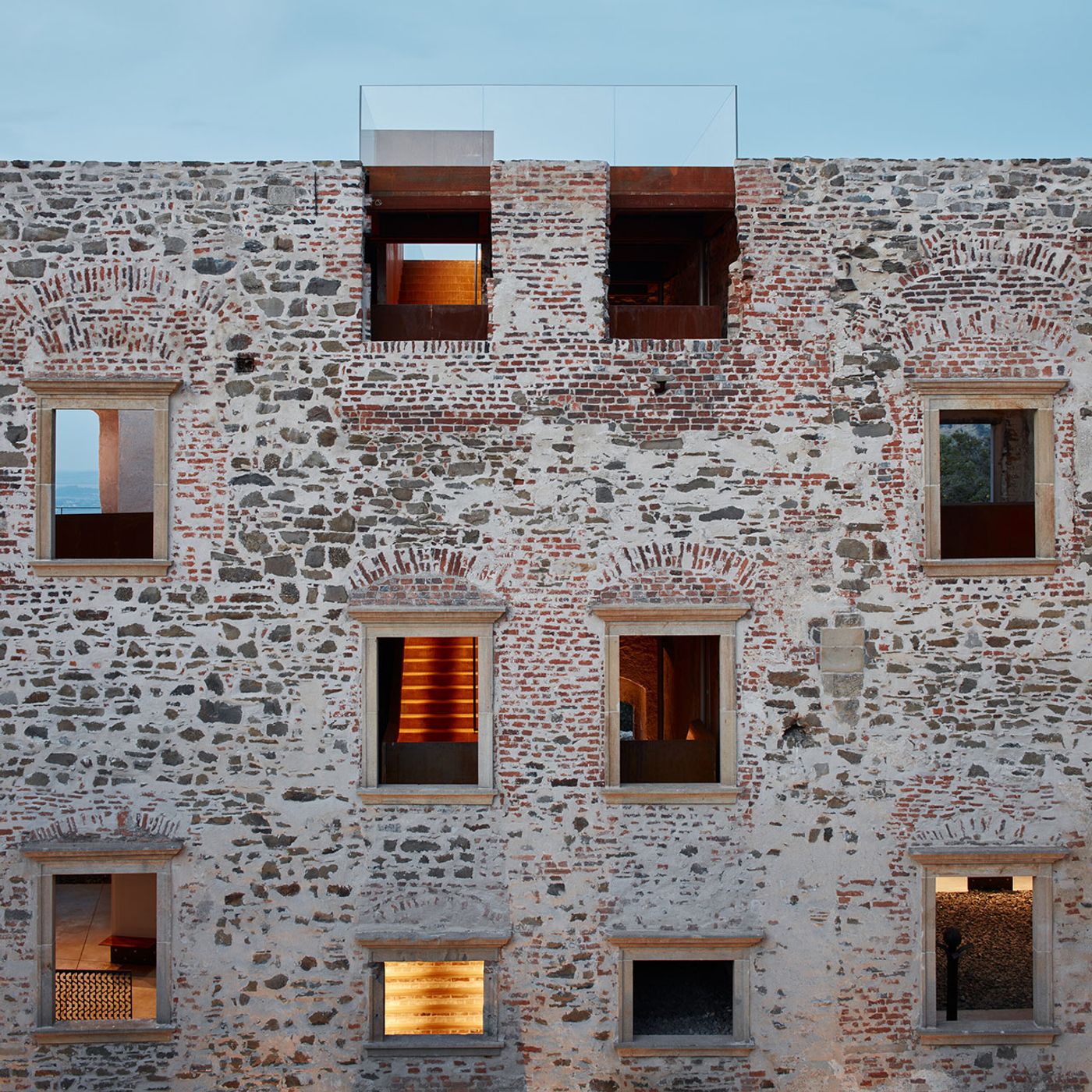
Photography by BoysPlayNice.

Photography by BoysPlayNice.
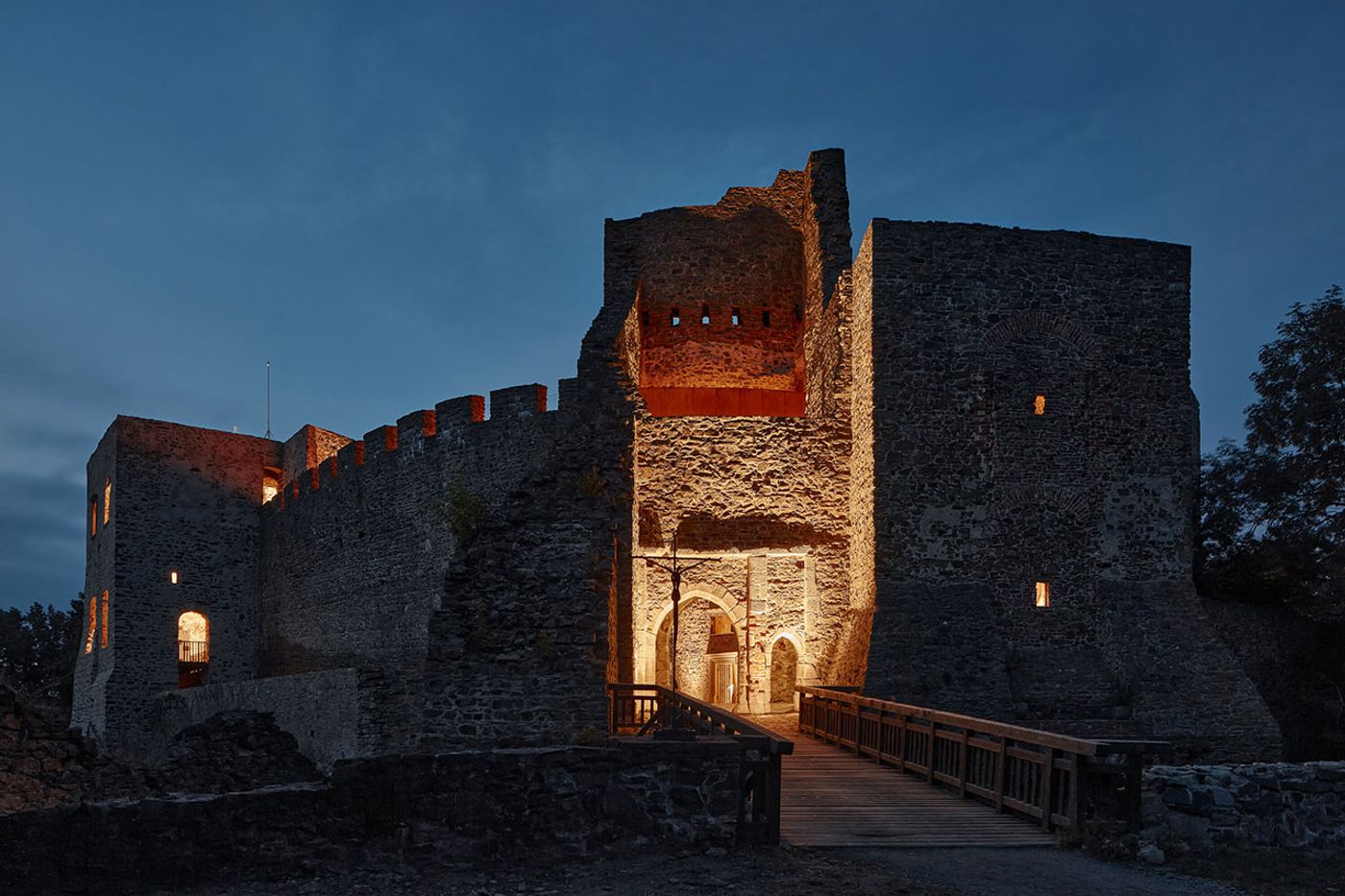
Photography by BoysPlayNice.
